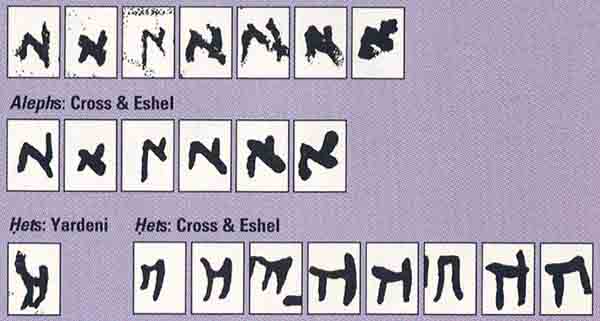Breaking the Missing Link

Cross and Eshel misread the Qumran ostracon relating the settlement to the Dead Sea Scrolls
With all due respect to my distinguished colleagues Frank Moore Cross of Harvard University and Esther Eshel of Hebrew University in Jerusalem, their reading of the recently excavated and already famous ostracon from Qumran is, in a word, impossible.
If their reading were correct (see “The Missing Link,” BAR 24:02), it would indeed provide the “missing link” between the settlement at Qumran and the Dead Sea Scrolls discovered in 11 nearby caves. For, according to their reading, the inscription on the two pieces of broken pottery records a deed of gift “to the Community” (the Yah
I agree with Cross and Eshel that “whoever wrote the text on the sherd was not a very skilled scribe because it is quite crudely inscribed.” I also agree with them that the text is a draft of a deed of gift.
But I emphatically disagree with their reading of the crucial line 8. There is nothing there about an oath “to the Community.” This is simply a deed of gift of an estate and all the trees on it. We also disagree about much else in the text (they see much more in this very badly worn text than I do), but these differences are relatively minor compared to our differences concerning line 8. In the box above, their translation and my translation are printed side-by-side (together with their reconstruction of the Hebrew text and mine; incidentally, a dot above a letter indicates it is unclear and therefore questionable). Despite our differences, we agree that one H
Then comes line 8. They say that the gift was made to “fulfill” an oath “to the Community.” In my view, it is simply a continuation of the list of trees in line 7. I read line 8 as follows: “and every othe[r(?)] tree.”
Let us look more closely at line 8. You can see more in the two different photographs in the box (above) than you can by looking at the ostracon itself. The modern Hebrew letters of both of our interpretations appear above the photographs from which we worked. Beneath these are a drawing by Cross and Eshel from their article in the March/April 1998 BAR and my drawing (see “The Missing Link,” BAR 24:02). Below them are our respective transliterations and English translations.
Readers who know Hebrew may question the waw (
In my technical article on this ostracon, I analyzed the direction and order of the strokes in several letters (scholars call this ductus), which helps to distinguish various letters. Here, however, I will call attention only to a couple of clear errors in the Cross-Eshel drawings. Look at the last three letters in their drawing of line 8 (remember Hebrew is read from right to left). These are the letters that supposedly spell Yah
Cross and Eshel also misinterpret the beginning of this crucial line: Look at the fourth and fifth letters from the right (lamed [
My decipherment of the line—“and every othe[r(?)] tree”—fits perfectly with the context of the document and is similar to lists regularly occurring in deeds of conveyance found in the Judean desert. For example, a deed of sale from Wadi Murabba‘at includes the expression “the fig trees, the olive trees, the tree(s).”3 A lease includes the expression “and every tree within them.”4 Another lease provides for “the palms and the rest of the trees within them.”5 A deed of gift includes “all palms and trees.”6 A deed of sale provides for “palms and sycamores and trees.”7 My reading of the Qumran ostracon is thus consistent with common expressions in other conveyances from the same general area and time. As one can see, even though the formulation is not identical, the general structure of the deeds is similar. As evidenced in the documentary texts from the Judean desert, the scribes allowed themselves a certain freedom in formulating the deeds.
In short, Cross and Eshel have clearly misread this ostracon, and therefore their interpretation is misleading. This ostracon cannot be used to relate the people who wrote the scrolls to those who lived at Qumran.
For further details, see Ada Yardeni, “A Draft of a Deed of an Ostracon from Khirbet Qumran,” Israel Exploration Journal 47:3–4 (1997), pp. 233–237.
Yardeni


Dots above a letter indicate that the reading of the letter is uncertain.
Cross and Eshel


Dots above a letter indicate that the reading of the letter is uncertain.
MLA Citation
Endnotes
4Q212, Col. D: 16, 18, 20. See also Ada Yardeni, The Aramaic and Hebrew Documents in Cursive Script from Wadi Murabba‘at and Related Material—A Palaeographic and Epigraphic Examination (Ph.D. diss., Hebrew University, Jerusalem, 1991), p. 158.
See also the other










